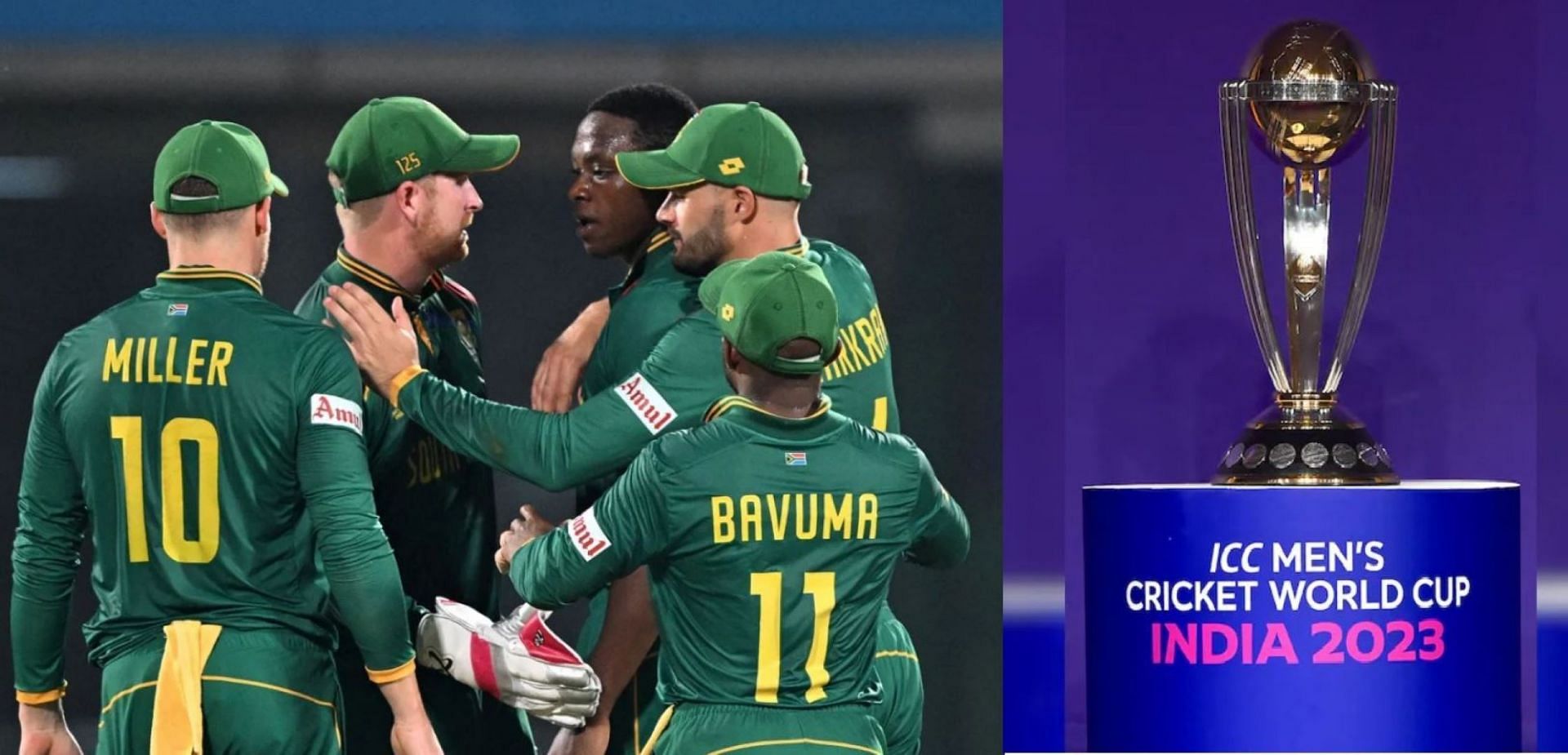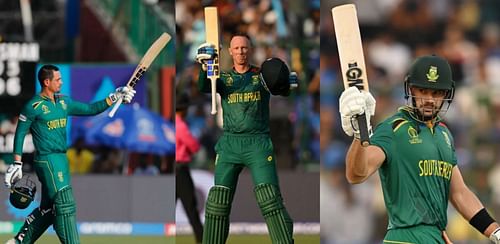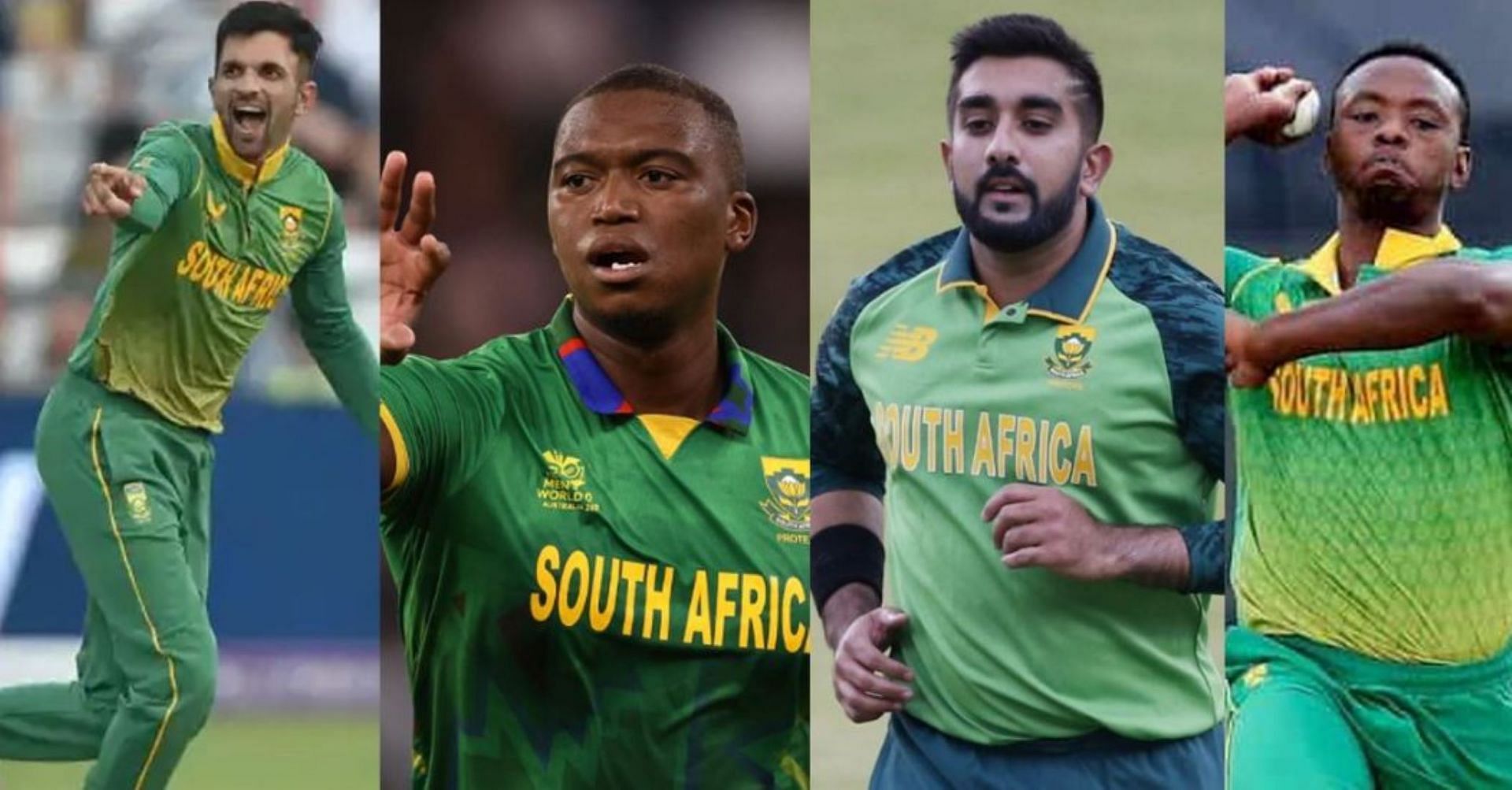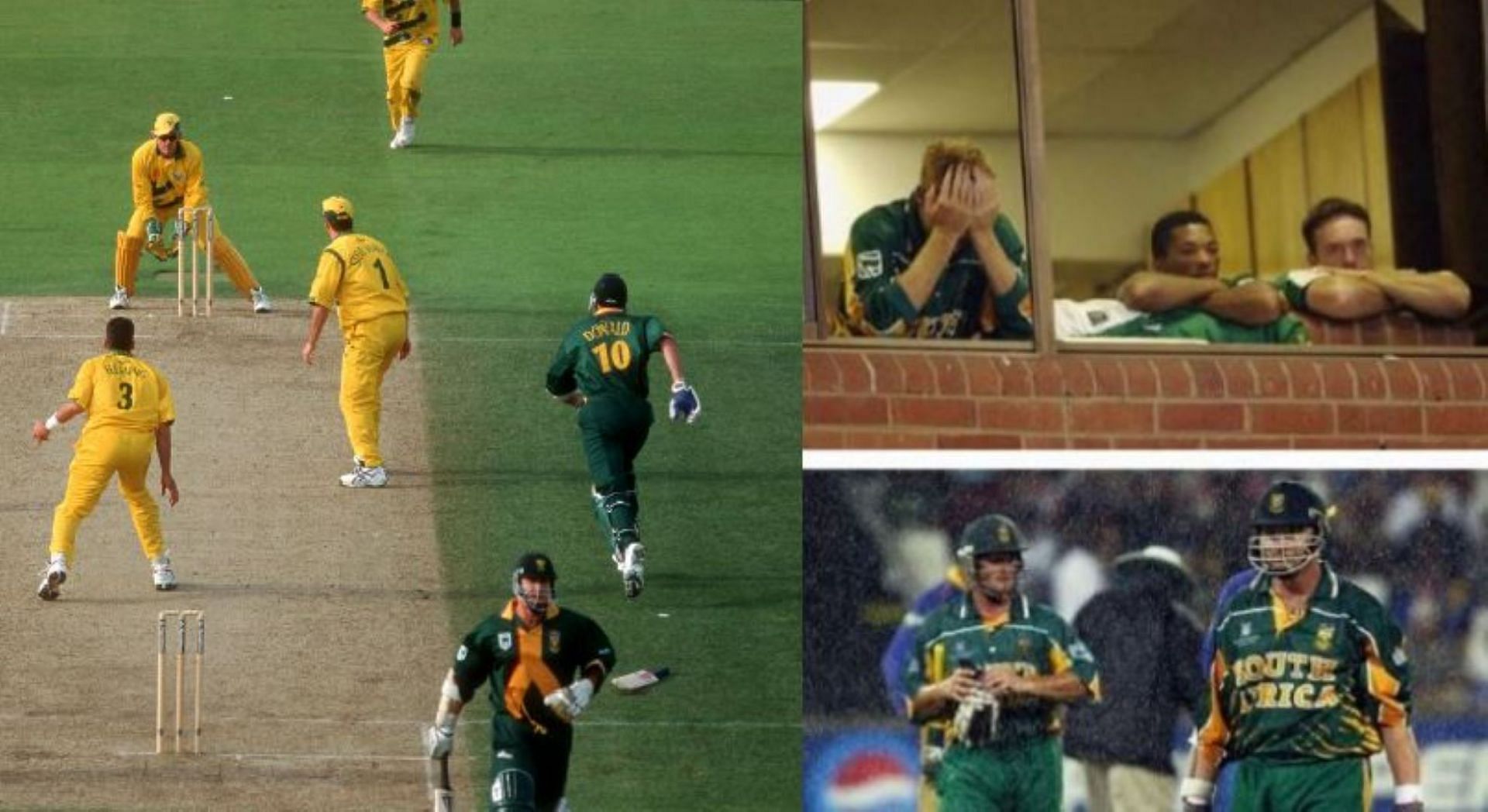
3 reasons why South Africa could be favorites to win the 2023 World Cup
South Africa began their 2023 World Cup campaign with a resounding statement win against Sri Lanka in Delhi on October 7. Despite losing the toss and being asked to bat first, the side showed no opening game jitters in pummeling the Lankan attack at the nation's capital.
Boasted by three centuries in an innings for the first time in a World Cup game from Quinton de Kock, Rassie Van der Dussen, and Aiden Markram, the Proteas rampaged their way to a mammoth total of 428/5 in 50 overs. The brutal batting display was followed by a solid all-round bowling performance on a belter of a track to emerge victorious by a massive 102 runs.
It was also a record third time that the South Africans breached 400 in a World Cup game and the highest team score in the storied history of the marquee event.
Markram also became the fastest World Cup centurion off 49 deliveries, overtaking the record previously held by Kevin O'Brien against England in 2011.
While it is not news anymore that South Africa has never won a World Cup in their otherwise proud history, the early signs point to a potential breakthrough in the ongoing tournament.
As we monitor their progress through the tournament, let us look at three reasons South Africa could be the favorite to win the 2023 World Cup.
#1 South Africa boasts arguably the best top 6 of the World Cup

While several sides in the World Cup boast formidable batting lineups, it could be argued that the South African top-six stands out in consistency, conversion, and strike rates.
In Quinton de Kock, the Proteas have one of the best ODI openers, with over 6,000 runs at an average of over 45 and a strike rate above 96. He also averages an outstanding 53 at a strike rate of 102, with three centuries in 50-over cricket in India.
His opening partner Temba Bavuma has rediscovered himself in white ball cricket, averaging an incredible 71.66 at a 104.53 strike rate in 11 ODIs this year. Following the two openers is South Africa's Mr. Reliable - Rassie Van der Dussen, who averages a meaty 58.29 with an 89 strike rate in ODI cricket.
The middle order is further bolstered by the supremely talented Aiden Markram, averaging almost 37 at a 99.38 strike rate, and the in-form Heinrich Klaasen, who is averaging a stunning 55.90 at a 151.90 strike rate in 2023.
If all that firepower isn't enough, coming in at No.6 will be the left-handed David Miller. The southpaw has a vast experience of 161 ODIs, a career average of 43, and a strike rate of 103.76.
Most of these batters have plenty of experience playing white-ball cricket in Indian conditions, having been part of the IPL for several seasons.
The side have now recorded 300+ scores in four consecutive ODIs, dating back to the final three games against Australia. Hence, the Proteas' batting lineup should prosper massively on the flatter Indian pitches right through the World Cup.
#2 Tremendous variety in the bowling unit

Highly underrated due to the absence of Anrich Nortje, the South African attack quietly possesses tremendous variety that is a must on Indian tracks.
In Kagiso Rabada, the Proteas have a spearhead of their attack at the peak of his career at 28, with prior experience in India and the World Cup. The champion bowler has played 14 ODIs in India and picked up an impressive 20 wickets at an economy of only 5.10 per over.
Rabada will be joined by Lungi Ngidi, who has much IPL experience, especially with the Chennai Super Kings (CSK), to master bowling on Indian conditions. The duo are joined by the tall left-arm pacer Marco Jansen, who has shown the knack of picking up early wickets with the new ball.
Apart from the trio, the Proteas also boast young quicks in Gerald Coetzee and Lizaad Williams, who might have the advantage of carrying no past baggage playing in their first World Cup.
The spin department consists of two excellent bowlers of different ilk - Keshav Maharaj and Tabraiz Shamsi. While Maharaj is an orthodox left-arm spinner who is focused on maintaining an accurate line and length, Shamsi's chinaman is a vital wicket-taking option in the middle overs for South Africa.
Maharaj boasts an impressive economy rate of under 4.80 runs per over, while Shamsi has picked up 63 wickets in 46 games, including two four-wicket hauls and a five-fer.
The difference in styles and experience with options for all kinds of pitches makes the South African more threatening than presently rated.
#3 No pressure of playing up to the favorites tag

Winners of high-pressure tournaments like the World Cup are often defined by the team that hold their nerves and makes sound decisions in the knockout games more often than not.
While a team like Australia has enjoyed being favorites and came out on top numerous times, others like South Africa have struggled with the weight of expectations. Despite boasting a well-balanced squad in most World Cups, the Proteas have failed to live up to the favorites tag in the crunch games to be knocked out prematurely.
Temba Bavuma and company are relieved of that pressure for once, with most considering the side outsiders looking up to the heavy favorites like India, Australia, and England. It is a position that New Zealand has relished to upset several high-profile teams at the knockouts, including South Africa in 2015 and India in 2019.
Unfortunately for the Rainbow nation, the impressive showing in their maiden World Cup in 1992, followed by consistent performances in the four years leading up to each World Cup, has had them among the heavy favorites.
It led to the side buckling down under pressure against sides that could play freely in World Cups from 1996 to 2015, where they suffered two quarter-final and three semi-final exits.
On this occasion, it will be a role reversal, as the Proteas are the hunters rather than the hunted, allowing them to play expressive cricket without fearing the consequences.
With the change in mindset, the South African lineup can be dangerous and perhaps clinch their maiden World Cup title.